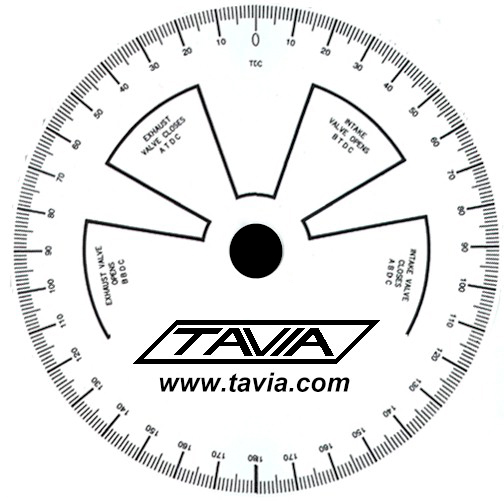T56MaxTorq
Well-Known Member
Installing a MP .528 solid flat tappet into a 360 and I'm having problems degreeing the darn thing. I'm getting some funny numbers while finding the intake centerline. Following the directions that came with the cam on how to degree it I should be installed at 112 ICL. I made a degree wheel from a template online and glued it onto some cardboard, then made a piston stop from an old spark plug, bolt, and nut. I have the dial indicator set on the horizontal plane of an upside down lifter on the #1 intake lobe.
I rolled the motor over til it hit the stop, set the wheel at 0, rolled it the other way and it was 26 degrees. Rolled the motor back to 13 degrees, and the #1 intake lobe is just about to open. Set the wheel to 0. Rolled it over and found max lift of the lobe. Set the the dial to 0. Rolled it counter-clockwise til the indicator was past .1, then rolled it clockwise til the indicator was .025 from max lift. I think this is the part that is confusing me. Recorded the degrees as 76.5, rolled it clockwise past max lift - past null of the gauge and down .025 and recorded 103 degrees. The degrees were based off the outer most numbers on the wheel, the inner numbers were 103.5 and 73, respectively.
No combination of those numbers make near 112, where it's supposed to be set. The best I could get would be 103ish. I don't think it could really be off 9 degrees could it?
Confused on what I'm doing wrong but it must be that I'm on the wrong stroke (I placed the wheel at 0 degrees TDC where it's just about to go into the intake stroke) And the #1 piston looks like it's actually at TDC. Or I'm reading these numbers all wrong. The timing chain is nulled to 0, no advance or retard. Thanks guys!
I rolled the motor over til it hit the stop, set the wheel at 0, rolled it the other way and it was 26 degrees. Rolled the motor back to 13 degrees, and the #1 intake lobe is just about to open. Set the wheel to 0. Rolled it over and found max lift of the lobe. Set the the dial to 0. Rolled it counter-clockwise til the indicator was past .1, then rolled it clockwise til the indicator was .025 from max lift. I think this is the part that is confusing me. Recorded the degrees as 76.5, rolled it clockwise past max lift - past null of the gauge and down .025 and recorded 103 degrees. The degrees were based off the outer most numbers on the wheel, the inner numbers were 103.5 and 73, respectively.
No combination of those numbers make near 112, where it's supposed to be set. The best I could get would be 103ish. I don't think it could really be off 9 degrees could it?
Confused on what I'm doing wrong but it must be that I'm on the wrong stroke (I placed the wheel at 0 degrees TDC where it's just about to go into the intake stroke) And the #1 piston looks like it's actually at TDC. Or I'm reading these numbers all wrong. The timing chain is nulled to 0, no advance or retard. Thanks guys!

















